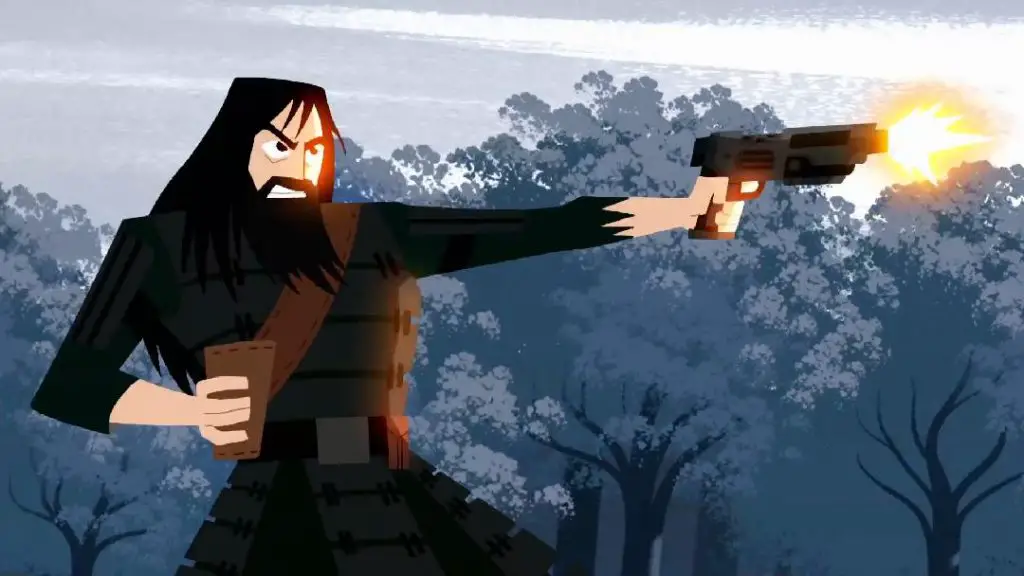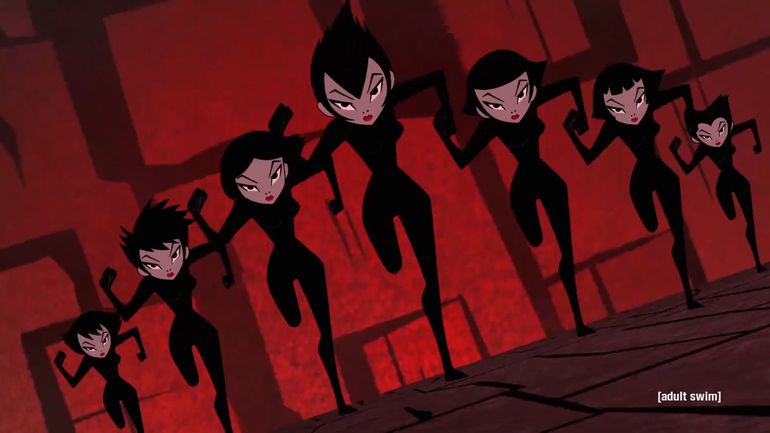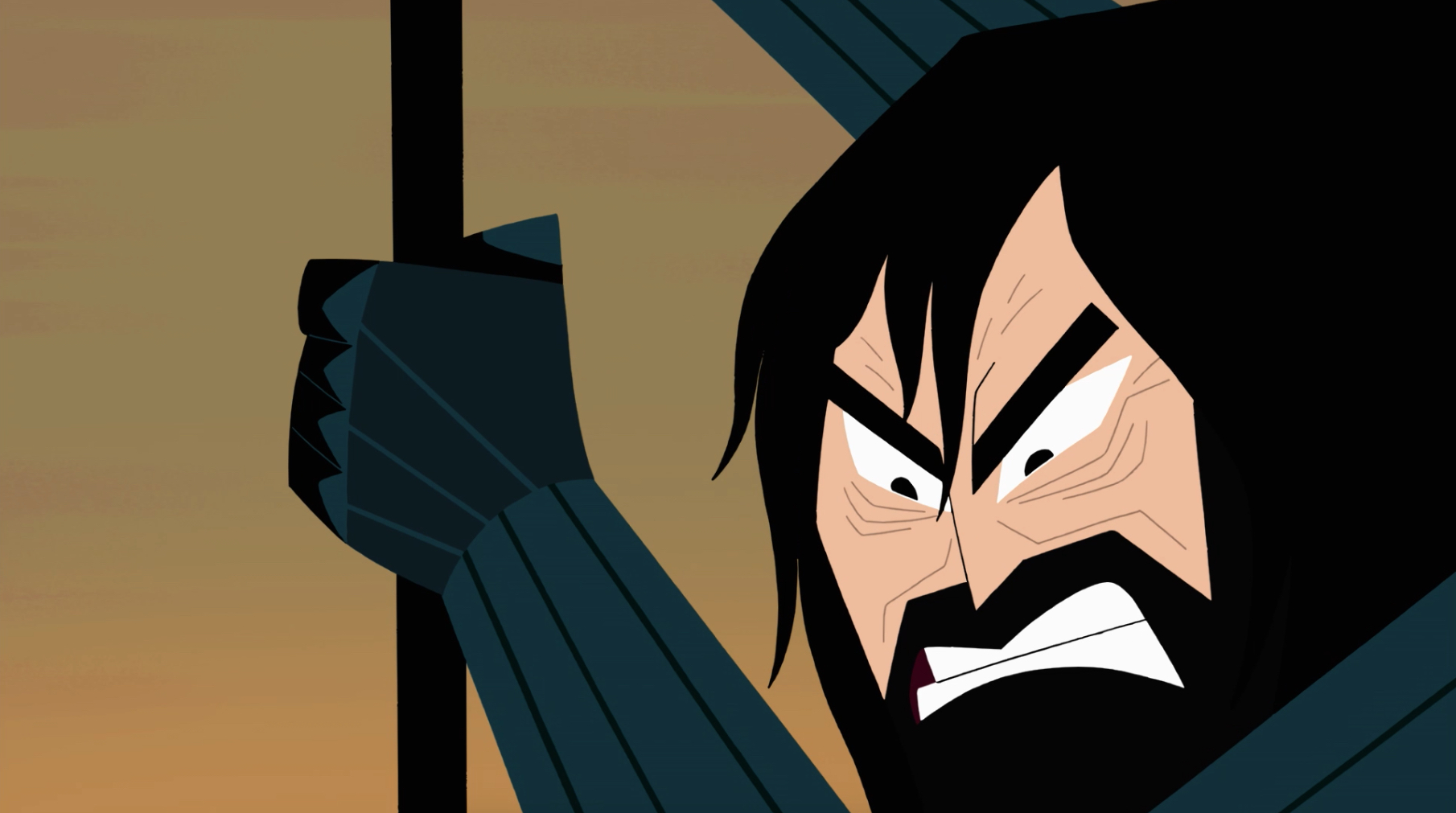Cartoon Network’s track record when trying to recapture its old audience from the 1990s has been nothing short of underwhelming.
The longtime titan of the animation industry has constantly made attempts to revive older properties, to appeal to viewers’ nostalgia, but the shift toward a more comedic approach for their content has prompted most of those reboots to fail in the eyes of the millennial generation, a demographic who once confided in these franchises.
“The Powerpuff Girls” (2016) ditched the quick editing and snappy dialogue of the classic original in favor of stilted comedy and minimal action, a transformation that betrayed the fandom by sapping the energy from a series that once prided itself on quick-witted fun. “Teen Titans Go” (2013) attracted a comparable amount of backlash for altering its focus from action and character exploration to episodic comedy, changing the lovable cast of the original “Teen Titans” into an assembly of unlikable buffoons.
Rather than organically building on the engrossing themes and clever humor of the original programs to accommodate the original fans, people who are now adults with real world experience, Cartoon Network regressed the maturity level of the reboots, which alienated veteran audiences and drew immense criticism. Therefore, when the network announced the return of the Emmy Award winning “Samurai Jack,” fans reacted with a fitting amount of concern.
For many, the story of the titular main character, a stoic samurai venturing through a corrupted future in search of a way back to the past, was one of their earliest exposures to the power of visual storytelling. Kids fell in love with Jack and desperately wanted to see him succeed in his quest against the demon Aku, a tyrannical sorcerer who enslaved the world’s population after hurling Jack into the distant future. Sadly, after the animated masterpiece was cancelled following its fourth season, it seemed inevitable that the highly anticipated conclusion would never even make it to storyboarding.
However, against all odds, Season 5 was finally confirmed to conclude Jack’s story, thirteen years after the series ended its initial run. Fans rejoiced, but considering Cartoon Network’s history with its older franchises, some lamented the possibility that “Samurai Jack” would go the way of both “Powerpuff Girls” and “Teen Titans,” delivering an unfaithful, dissatisfying finale to one of animation’s greatest achievements.
Even after the news broke that the series would continue under the guidance of original creator Genndy Tartakovsky, and air on the network’s mature nighttime block, Adult Swim, any optimism conveyed by the fandom was met with equal levels of caution. To botch the finale would mean ruining another precious childhood franchise; the expectation was greatness, but the fear remained mediocrity.

What nobody expected, however, is what Tartakovsky and Cartoon Network eventually delivered in Season 5: The conclusive ten episodes of “Samurai Jack” have presented an incredible fantasy tale, surpassing the original run in every aspect of cinematic quality, while becoming more culturally relevant than ever, thanks to a noticeably darker tone fit for its original audience, the millennial generation turned adults. The violent action has been ramped up rather than neutered, a striking contrast and welcome change to this comedic age of cartoons, but the most crucial difference is the dramatic shift in thematic focus. Rather than dumbing down the series, Cartoon Network took “Jack” to an unprecedented level of maturity.
Episode 1 begins fifty years after the final events of Season 4, with Jack, cursed by eternal youth in a dystopian future, having crumbled into nihilistic despair. He hasn’t returned to the past, he hasn’t saved his homeland or family and, most importantly, he hasn’t defeated Aku. Instead, Jack is endlessly and aimlessly wandering through a desolate land haunted by those he believes to have failed. Tartakovsky opportunistically laces Season 5’s opening arc with dark themes of self-doubt, guilt and apathy, while shifting the focus to a deep analysis of Jack’s psychology, which allows the show to age in maturity alongside its millennial fans.
The kids who once admired Jack are now seasoned adults with full-time responsibilities, weathered by time and hardship in an increasingly trying world. By replacing the series’ sense of optimistic adventure with Jack’s newfound cynicism during his fight with Aku’s assassins, dubbed the Daughters of Aku, the show exemplifies the brutal toll reality has likely taken on its faithful audience, becoming a more empathetic, pertinent viewing experience as a result.

Obviously, the implications of an oppressive dictator, such as Aku, hounding Jack around every corner draw certain political parallels in 2017, but even more pronounced than the external pressures is the shocking, internal turmoil Jack now constantly exudes. Whereas previously the protagonist personified confidence, dominating nearly every encounter with a quiet determination during the first four seasons, Jack grapples with self-doubt and uncertainty against the highly skilled team of female killers.
During the pulse-pounding chase scene in Episode 2, Jack is forced to scramble for his life in a labyrinth with Aku’s daughters lurking around every corner, each tasked with the sole responsibility of ending his life. While hiding, an illusion of Jack’s former self appears next to him, scolding the samurai for abandoning his honor and expressing doubt in his ability to win the fight, even suggesting suicide as a viable escape from the encounter.
The main character tries to shrug off his conscience, but visual cues throughout the sequence remind the viewer that Jack is indeed lacking in confidence. While he hides in a coffin, a nearby firefly, depicted through an eye-line match from Jack’s perspective, gradually loses its light. When juxtaposed with the samurai’s increasingly obvious panic, this scene visually symbolizes Jack’s waning trust in his ability to survive these encounters. After four seasons as a confident warrior, the protagonist is reduced to a frantic, uncertain mess.
Jack’s psyche has also been forced to carry the tremendous burden of guilt, which in turn has led him to an unsettling apathy. Throughout the series’ new opening title sequence, the main character is shown gazing into vast, open fields sprawling with skulls and scorched in flames, suggesting the deaths of those he failed to protect and the destruction he’s been unable to prevent.

During the first episode, Jack envisions a river of corpses that plead with him to save them, most notably those of his family, who chastise the samurai for abandoning them. Overwhelmed by guilt, Jack flees in desperate panic, driven to the brink of insanity by feelings of culpability, a bleak outlook that has led him to nihilism.
When he sees a pillar of smoke rising from a nearby town, the discouraged samurai elects to continue on his aimless path and ignore the call for heroism, a complete reversal from the honorable hero of the first four seasons, who heeded every call for help without hesitation.
This unnerving turn in Jack’s character arc is a direct appeal to the series’ original audience who connected with the show’s sense of adventure over a decade ago. After experiencing adulthood in a turbulent world, these same fans of the millennial generation now likely empathize more with the grounded, adult themes conveyed in Season 5’s opening episodes.
During the show’s hiatus, it’s reasonable to assume that viewers have had to endure at least part of what Jack is currently grappling with. Perhaps self-doubt crept into a skill or hobby they were previously confident in. Maybe they disappointed someone, whether it be a friend, family member or mentor. It’s even possible that positive ideologies have been shrouded by cynicism and twisted into apathy after witnessing all the troubles the world is currently facing.
These doubts are simply part of growing up, especially for a millennial era that has been forced to age extremely quickly to meet the increasing expectations of a harsh, unforgiving world. By applying these traits to Jack, Tartakovsky allows his protagonist to connect with the original followers of the series, not as a distant action hero meant solely for entertainment and escapism, but, as a close, relatable friend who has struggled along with them into adulthood during the past thirteen years.
However, despite all the uncertainty and skepticism, Jack is able to overcome his internal turmoil and retain an ounce of hope, thanks to the empathy and generosity of those he has positively impacted throughout his tireless journey. Season 5’s second arc focuses primarily on Ashi, the sole surviving Daughter of Aku, following their battle with the titular samurai, namely her transformation from a hateful, naive servant to a redeemed heroine, as a direct result of her travels with Jack.

When the two first meet, Ashi wants nothing more than to end Jack’s life and ignore the world’s tangible destruction, continuing to blindly serve a father whom she has never met. However, after Jack shows her the beauty of nature and camaraderie throughout Episodes 4-6, she evolves into an independent warrior capable of compassion, abandoning her charred, blackened wardrobe to one of leaves and flower petals, literally and figuratively turning a new leaf.
Thus, when Jack attempts to commit ritual seppuku during the heart-stopping climax of Episode 6, Ashi fends off the spirits haunting his psyche, insisting that the samurai helped her to redemption and is therefore not beyond saving. As a result, Jack survives the incident, having gained newfound hope from Ashi’s selfless compassion. During the next episode, Jack must isolate himself in meditation while confronting the demons that plague his consciousness. During this sequence, Ashi defends the immobile protagonist by fending off an entire army of Aku’s minions, including the cruel, torturous mother who initially distorted her perception of the world.
Ashi’s development from Jack’s bitter antagonist to his most vital companion shows that beyond the pessimistic, apathetic individual is a beloved figure who has, intentionally or otherwise, molded the world around him into a better place, a savior to countless people who acknowledge him as both a hero and friend. As with Ashi, Jack has formed inseparable bonds with countless individuals throughout the series who are compelled to offer assistance and guidance when his inner strength falters and leads to darkness.
When juxtaposed with the initial arc of anxiety and nihilism, the remainder of Season 5 proposes hopeful encouragement that, like Jack, the original millennial viewership can overcome personal self-doubt and cynicism in a hostile world, by confiding in the numerous relationships they’ve developed during their lives.
Like Ashi, selflessly defending Jack from Aku’s hellish soldiers while the latter finally focuses on his mental health, there will be people from an individual’s past who have felt a profound, positive impact from their very existence, and who are willing to fight alongside them during times of desperation. Even in the bleakest scenarios of apathy, hope can always be found by those tenacious enough to seek help from friends, family and, like Ashi, enemies turned reconciled allies.
By embedding darker themes into Jack’s character, while retaining optimism in the healing power of camaraderie, Tartakovsky has concocted the perfect tonal blend for keeping “Samurai Jack” culturally relevant to the millennial generation in 2017, finally providing the animated masterpiece the mature conclusion that its aged fandom both need and deserve.








![Illustration of a bedroom featuring the [as] bump](https://cdn-0.studybreaks.com/wp-content/uploads/2021/06/Why-is-your-TikTok-for-you_-page-crowded-with-homemade-adult-swim-bumps_-150x100.jpg)








